One of the body’s most used and abused joints, the knee distributes a person’s weight with each step. The average person takes more than 1 million steps each year, which translates to a tremendous amount of mechanical force traveling through the knee. What’s more, the knee must handle the stressors of gravity and muscle contractions, too. And, of course, it doesn’t merely bend and straighten; it also twists and turns. (See Knee anatomy by clicking on PDF icon above.)
Not surprisingly, the knee is highly vulnerable to injury. Knee problems account for more than 19 million physician visits each year. Eventually, many people with these problems undergo total knee replacement (TKR), an operation that replaces knee surfaces with metal, cement, or plastic components.
Today, knee replacement surgery is the most common joint surgery performed. Every year, about 300,000 people undergo TKR in the United States. Between 2005 and 2030, the demand for TKR is expected to grow by 601%, largely due to obesity and the growing number of aging baby boomers working past retirement age and continuing with activities that can strain aging joints. Nursing care can dramatically influence outcomes for patients who undergo TKR.
Knee implants may be made of metal (chrome or titanium) or plastic. Most have three components:
- femoral head, typically made of a strong, highly polished metal
- tibial component, made of durable plastic (high-density polyethylene), usually held in a metal tray
- patellar component, also made of plastic.
Knee implants weigh between 15 and 20 oz. Most are cemented into place with methylmethacrylate, but improved biomaterials have piqued interest in a cementless method that relies on bone growing into the implant surface for fixation. This method saves time and promotes long-term
osseointegration.
Common causes of knee problems
The knee problems that most commonly necessitate TKR include knee injury (as from patellofemoral syndrome), congenital joint deformity, knee joint infection, and avascular necrosis (inadequate blood supply to the knee). Osteoarthritis, rheumatoid arthritis, and traumatic arthritis are the leading causes of chronic knee pain and disability. While arthritis can take many forms, its outcome is the same—inflammation. If left untreated, arthritis causes erosion of knee cartilage. Ultimately, it can affect more than just the joints; it can damage supporting structures, such as muscles, tendons, and ligaments.
The most common knee disorder, patellofemoral syndrome (also called runner’s knee) is an inflammation of the patellar tendon. It may arise as a tissue-related problem that creates knee pressure and irritation, or it may result from a tear, slippage, or dislocation within the knee’s structure. Sometimes it affects both knees. Surgery usually is considered a last resort.
Sports activities subject the knees to a great deal of stress. Running involves violent motions that extend and exert the knee past its normal capacity and may damage the anterior cruciate ligament. Knee cartilage lesions can result from accidents or ligament injuries. Knee strain (as from excessive wear and tear) can originate from muscle weakness or obesity.
Of course, aging is unkind to knees. Weakening of tissues around the joint can lead to the knee instability common among the elderly.
Evaluating knee problems
Whether a knee problem is mechanical or inflammatory, it typically causes pain and limited mobility that lead the sufferer to seek health care. Specific signs and symptoms may vary with the underlying cause. Patients with osteoarthritis are likely to complain that even the simplest daily activities, such as getting in and out of a car, climbing stairs, or walking, cause severe pain. Those with significant knee-cartilage loss may state, “It feels like bone rubbing against bone.”
A comprehensive history paired with physical inspection promotes a correct diagnosis and improves the chance of a better outcome. (See Key questions for patients with knee problems By clicking on PDF icon above.) When inspecting the knee, observe its color and check for redness, heat, swelling, and tenderness. Determine if the knee joint has adequate range of motion (ROM). Ask if the patient has pain; if so, is it dull or sharp?
An orthopedic physician can determine the extent of knee damage from a physical examination and such diagnostic studies as magnetic resonance imaging. To evaluate knee pain, expect the physician to order standing (weight-bearing) X-rays along with anteroposterior and lateral views.
Management options
Cutting-edge technology in orthopedics has brought new procedures and treatments for knee problems. Accordingly, management of knee problems is changing rapidly. Today, patients have a wide range of options, including surgery. (See Knee-deep in options By clicking on PDF icon above.)
Many knee conditions respond to noninvasive treatments, such as applying heat or cold, getting proper rest, avoiding aggravating activities, and avoiding weight gain. Some physicians may recommend a knee brace to support painful knee injuries, such as torn ligaments that don’t warrant surgery. To be effective, the brace must be properly sized, placed, and maintained.
Over-the-counter analgesics, such as acetaminophen, ibuprofen, and aspirin, reduce pain and inflammation. In more severe cases, corticosteroids are injected into the knee for quick relief and pain reduction lasting several months. Strengthening exercises have long been recommended for arthritic joints. Yoga, a gentle form of exercise that increases flexibility, may be a safe option for less athletic patients.
Some patients benefit from physical therapy. Therapists tailor the treatment plan to each patient, with the goal of improving overall well-being by promoting mobility, restoring function, and preventing disability.
Surgery
If conservative treatment fails, surgery may be recommended to promote the best long-term outcome. Types of knee-replacement procedures include:
- unicondylar replacement, which replaces only the more damaged half of the knee
- constraint or hinged replacement, which links two separate parts of the knee with a hinge
- semiconstrained implant, which provides increased stability after all inner knee ligaments are removed
- nonconstrained implant (the most common type), in which the components aren’t linked and replacement parts lack built-in stability. Instead, the implant relies on the patient’s muscles and ligaments for stability.
Preoperative care
Before surgery, determine if the patient has risk factors that could cause or contribute to a poor outcome, such as increased age, obesity, muscle weakness, and poor emotional status. Encourage the patient to ask the surgeon about the advantages and drawbacks of each type of implant and to discuss which implant would be most suitable to the patient’s lifestyle.
Many TKR patients are elderly; some may be poor historians and not remember what they are allergic to or that they are diabetic. If so, try to obtain pertinent information from a family member.
Collect blood samples and urine specimens, as ordered. If urinalysis reveals a urinary tract infection, expect the patient to take antibiotics before surgery, because a wound infection is much more likely in patients with preexisting infection.
Skin infection or chronic edema of the lower extremities may necessitate postponing surgery. Ask if the patient has had recent dental or oral procedures, as an oral or dental infection can spread and cause serious effects at the surgical site.
The outpatient preoperative workup includes consultation with an anesthesiologist to determine whether general, epidural, or spinal anesthesia should be used. As ordered, make sure an electrocardiogram is performed and read.
Instruct patients to stop taking aspirin and other antiplatelets, as ordered, because these can inhibit clotting. Also urge patients to stop ibuprofen or naproxen; these non-steroidal anti-inflammatory drugs (NSAIDs) can thin the blood. Most surgeons recommend stopping antiplatelets and NSAIDs 1 week before surgery.
Obtain and document the patient’s preoperative vital signs, level of consciousness, comfort level, pain level, ROM, and mobility for later comparison. Listen empathetically to the patient’s fears and concerns about upcoming surgery.
Surgical procedure
TKR usually lasts about 2 hours. The patient is placed in a supine position with knees slightly bent. A 4″ to 6″ midline incision is made to access the knee joint. Part of the kneecap is removed; tendons and leg muscles are moved to the side. Sometimes the surgeon must cut into the knee tendon or muscle. Damaged cartilage and bone from the femur and tibia are removed and rough knee areas are smoothed.
Next, the implant parts are measured and prepared for placement. The upper part fits into the femur; the lower part fits into the tibia. The resurfaced kneecap fits over the front of the implant and may be secured with screws or cement.
Then knee muscles and other tissues around the joint are moved back into place. A plastic liner is inserted between the femur and tibia to help the parts move smoothly. A drainage tube may be placed to drain blood and fluids away from the knee, because accumulation may lead to infection. Typically, the tube is removed 24 hours after surgery. Finally, the incision is closed with staples (to be removed in 10 to 14 days) and covered with a bulky dressing.
Potential complications
Serious complications of TKR, such as a knee joint infection, affect less than 2% of patients. Major complications, such as stroke and myocardial infarction, are even rarer. Without appropriate prophylaxis, the risk of deep vein thrombosis (DVT) after knee replacement ranges from 40% to 60%. Pulmonary embolism also may occur.
Postoperative nursing care
Typically, patients stay in the postanesthesia care unit (PACU) for 2 hours, where their vital signs are monitored and documented every 5 to 10 minutes for the first hour or until stable, and then every 15 minutes until PACU discharge.
After the patient’s return to the unit, assess vital signs every shift and as needed. Compare current comfort and pain levels, level of consciousness, ROM, and mobility to preoperative baseline findings. Monitor and record body temperature; report temperatures above 100.5° F (38° C).
Encourage deep-breathing and coughing exercises to help prevent lung congestion. Closely monitor foot circulation. Assess lower extremities for warmth, color, pedal pulses, capillary refill time, and movement. Check closely for neurologic deficits by assessing dorsiflexion, plantarflexion, and toe wiggling.
During inspection, pay special attention to the incisional area. Monitor for bruising; report redness, warmth, or swelling of the surgical site. Record drainage amounts; report excess drainage immediately, as this could signal bleeding into the joint. Be aware that many patients complain of slight numbness or stiffness and mild swelling at the incision site.
Keep the affected leg elevated to reduce swelling. Some surgeons order a continuous passive motion machine to provide knee support, reduce edema, and improve circulation. As ordered, use pneumatic compression to aid blood flow through leg vessels and help prevent DVT. Check for signs and symptoms of pulmonary embolism. Check for and report complaints of calf pain or swelling (which may indicate DVT) and chest pain or shortness of breath (possible symptoms of pulmonary embolism).
Active movement begins the first postoperative day, usually as a brief walk in the room using a walker, assisted by a therapist. If ordered, have patients perform ankle pump exercises to strengthen the leg and increase venous return. Instruct them to slowly move the toes upward toward the ceiling and then move them down, for 15 to 20 seconds at first.
Most patients need a progressive physical therapy program for 4 to 6 weeks after surgery. Expect physical and occupational therapists to be among the first caregivers the patient sees after surgery. These therapists can play a major role in recovery and prognosis, providing education and therapeutic programs that help the patient regain a normal ROM. They also can arrange for special equipment, such as a cane, walker, or reaching aid. Some patients may be referred to a long-term care facility for rehabilitation.
Administering medications
Commonly, a patient-controlled analgesia unit is used so the patient can self-administer analgesics. Small doses delivered at short intervals help stabilize serum drug concentrations to provide sustained pain relief. The goal is to keep patients as comfortable as possible while they gradually resume full weight-bearing.
Administer NSAIDs, if ordered. Offer antiemetics as needed, as many pain medications can cause GI upset. Know that knee pain should ease a few days after surgery; if it persists, notify the surgeon.
As ordered, administer anticoagulants (typically warfarin). Expect to continue I.V. antibiotics for the first 24 hours postoperatively. Be aware that for patients allergic to penicillin, the antibiotic of choice is cefazolin or vancomycin.
Patients usually require stool softeners, but many still are constipated and need a mild laxative on the second or third postoperative day.
Discharge education
Patients usually stay in the hospital 3 days after TKR, giving clinicians time to gauge how well they’re tolerating the prosthesis. During discharge teaching, provide the following instructions:
- Take prescribed medications as ordered.
- Have blood tests done as ordered (usually twice weekly) until discontinued by the physician.
- Keep follow-up appointments with the surgeon.
- Immediately report signs and symptoms of DVT, such as increasing calf pain, tenderness or swelling above or below the knee, or increased swelling in the calf, ankle, or foot.
- Immediately report warning signs of a blood clot that has traveled to the lung—sudden increase in shortness of breath, sudden chest pain, or localized chest pain with coughing.
- Promptly report signs and symptoms of possible infection of the knee implant—persistent fever (temperature above 101° F
[38.3° C]), shaking chills, excessive incisional drainage, unusual warmth or swelling around the incision, and increasing knee pain.
Continued care and rehabilitation after discharge are vital in helping the patient regain and maintain mobility and function. Stress the importance of continuing with rehabilitation, not only to maintain physical function but to prevent scarring and contractures of the new knee joint. Caution patients about the risk of falling, which could damage the knee. Teach them to avoid stairs until they’re able to keep a strong and mobile balance.
Urge patients to wear strong, sturdy shoes. Emphasize that canes, crutches, walkers, and handrails are an important part of rehabilitation. Explain that they may need periodic X-rays to evaluate for loosening or wearing out of prosthesis components.
In most patients, knee replacements last up to 20 years without causing problems. Most recipients say the implant dramatically relieves knee pain and improves mobility. Every step they take with their new knee takes them further on their journey toward healing and health.
Selected references
Agency for Healthcare Research and Quality. Total knee replacement: summary. Evidence report/technology assessment: Number 86. www.ahrq.gov/clinic/epcsums/kneesum.htm. Accessed January 27, 2011.
American Academy of Orthopaedic Surgeons. The diagnosis of periprosthetic joint infections of the hip and knee: guideline and evidence report. www.aaos.org/research/guidelines/PJIguideline.asp. Accessed January 27, 2011.
Cates HE, Schmidt JM. Closed manipulation after total knee arthroplasty: outcome and affecting variables. Orthopedics. 2009;32(6):398.
Kurtz S, Ong K, Lau E, Mowat F, Halpern M. Projections of primary and revision hip and knee arthroplasty in the United States from 2005 to 2030. J Bone Joint Surg Am. 2007 Apr;89:780-5. DOI:10.2106/JBJS.F.00222
Mood GR, Wilson Tang WH. Perioperative DVT prophylaxis. Emedicine. Updated January 24, 2009. http://emedicine.medscape.com/article/284371-overview. Accessed January 27, 2011.
Myles CM, Rowe PJ, Nutton RW, et al. The effect of patella resurfacing in total knee arthroplasty on functional range of movement measured by flexible electrogoniometry. Clin Biomech. 2006;21(7):733-739.
Tortora GJ, Derrickson BH. Principles of Anatomy and Physiology. 12th ed. Hoboken, NJ: Wiley; 2008.
Wylde V, Dieppe P, Hewlett S, Learmont ID. Total knee replacement: is it really an effective procedure for all? Knee. 2007;14(6):417-423.
Marilyn Loy Turner is a charge nurse at Cumberland Valley Manor in Burkesville, Kentucky. She has written health-related articles for various periodicals. The author and planners of this CNE activity have disclosed no relevant financial relationships with any commercial companies pertaining to this activity.

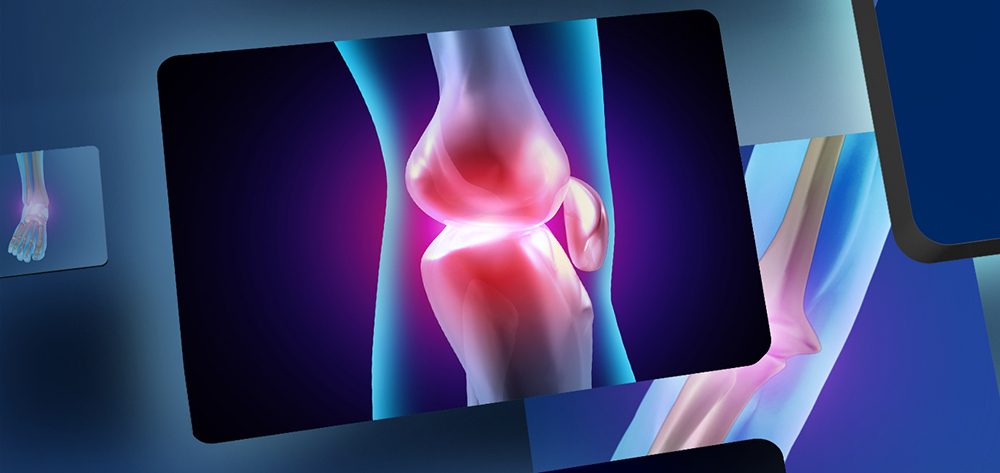




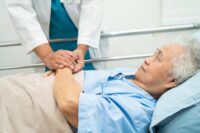

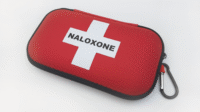

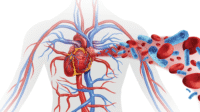
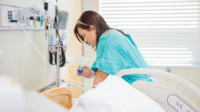



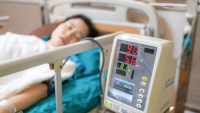



2 Comments.
I did not receive 1.6 contact hours on Certificate of Successful Completion in Recognition Completing the CNE Activity Entitled JOINT ADVENTURES: THE PATH TO TOTAL KNEE REPLACEMENT, 3/19/2013, online, activity code: ANT110301, which I earned. I missed only one test question # 11.
CONSTANCE PAVLIDES
pavlidesc4601@comcast.net
Thank you for your attention.
I am disappointed that Nurse Turner did not use any references from the National Association of Orthopaedic Nurses (NAON). NAON is a member of the Alliance. The Orthopaedic Nursing Journal is a peer-reviewed publication and is a wealth of information for nurses providing care to orthopaedic patients, especially those undergoing total hip and knee replacements.